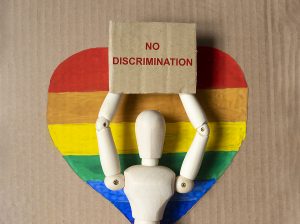A recent United States Supreme Court opinion, Bostock v. Clayton County, Georgia, rightfully received a lot of attention because it recognizes that federal law prohibits employers from discriminating against employees based on their sexual orientation.
 Although New Jersey and New York law both expressly prohibit sexual orientation discrimination, Title VII of the Civil Rights Act of 1964, the primary federal anti-discrimination law, does not. Bostock recognizes that sexual orientation discrimination is a form of gender discrimination, and thus violates Title VII. That is a huge victory for gay and lesbian rights, since it extends the prohibition of sexual orientation discrimination to all 50 states.
Although New Jersey and New York law both expressly prohibit sexual orientation discrimination, Title VII of the Civil Rights Act of 1964, the primary federal anti-discrimination law, does not. Bostock recognizes that sexual orientation discrimination is a form of gender discrimination, and thus violates Title VII. That is a huge victory for gay and lesbian rights, since it extends the prohibition of sexual orientation discrimination to all 50 states.
While the holding of Bostock relates to sexual orientation discrimination, its reasoning makes it easier to prove all forms of unlawful discrimination. Specifically, it explains that you can prove discrimination merely by showing you would not have been fired (or would not have experienced another adverse employment action, such as being demoted or not being hired) but-for your membership in a legally-protected category such as your gender, race, religion or national origin.
As Bostock explains, “a but-for test directs us to change one thing at a time and see if the outcome changes. If it does, we have found a but-for cause.” Under it, “a defendant cannot avoid liability just by citing some other factor that contributed to its challenged employment decision.” Rather, if an unlawful factor “was one but-for cause of that decision, that is enough to trigger the law.” It “makes no difference if other factors … contributed to the decision.”
The Supreme Court recognizes that this but-for test can be very broad since, “[o]ften, events have multiple but-for causes.” To illustrate its point, the Court provides the following example: “if a car accident occurred both because the defendant ran a red light and because the plaintiff failed to signal his turn at the intersection, we might call each a but-for cause of the collision.” In other words, under the but-for test the driver who ran the red light would be liable even if the other driver contributed to the accident by failing to use his turn signal, as long as the accident would not have occurred but for the fact that the first driver ran the red light.
Thus, as Bostock explains, under Title VII an employer “cannot avoid liability just by citing some other factor that contributed to its challenged employment decision.” Rather, the employer has violated the law if an unlawful discriminatory factor was “one but-for cause of that decision.”
But the Supreme Court did not stop there. It recognizes that employees also can prove discrimination using the “motivating factor” test. The Court describes the motivating factor test as a “more forgiving standard” than the but-for test, under which an employee can prove discrimination even if the discriminatory factor “wasn’t a but-for cause of the employer’s challenged decision.”
Bostock does not provide any explanation or examples of instances that would meet the motivating factor test but not meet the but-for test. But one possible example is when a discriminatory action sets a process in motion that leads to an adverse employment action. For example, a supervisor discriminates against an employee by over-scrutinizing her work, and then fires her because it discovered a serious violation of company policy as a result. It would seem the employer’s decision to fire that employee would not meet the but-for test, since if you take away the discriminatory decision to scrutinize the employee, the employer presumably still would have fired the employee for violating the company policy. However, since the employer discovered the employee’s infraction because of its discriminatory decision to over-scrutinize the employee, discrimination would appear to be a motivating factor for its decision to fire her.
It will be interesting to see how future cases apply the but-for and motivating factor tests in light of Bostock.
 New Jersey Employment Lawyer Blog
New Jersey Employment Lawyer Blog

